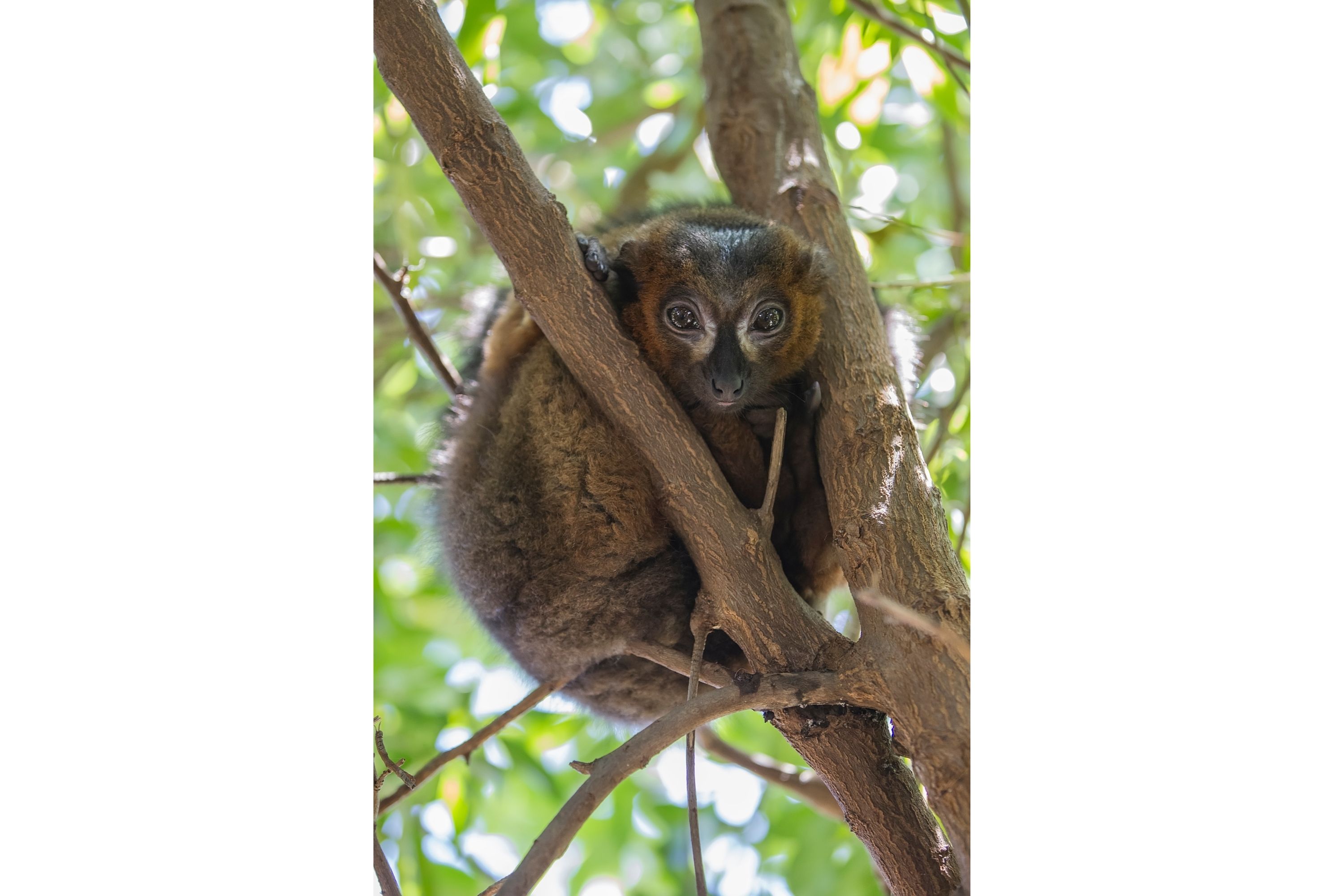Common brown lemur
(Eulemur fulvus)

Description
The common brown lemur (Eulemur fulvus) is a species of lemur in the family Lemuridae. It is found in Madagascar and has been introduced to Mayotte. The common brown lemur has a total length of 84 to 101 cm (33 to 40 in), including 41 to 51 cm (16 to 20 in) of tail. Weight ranges from 2 to 3 kg (4.4 to 6.6 lb). The short, dense fur is primarily brown or grey-brown. The face, muzzle and crown are dark grey or black with paler eyebrow patches, and the eyes are orange-red. Similar lemur species within their range include the mongoose lemur, E. mongoz, in the west and the red-bellied lemur, E. rubriventer, in the east. They can be distinguished from these species by the fact that E. mongoz is more of a grey color and E. rubriventer is more reddish. There is also some overlap with the black lemur in northeast Madagascar in the Galoko, Manongarivo and Tsaratanana Massifs. There is also overlap and hybridization with the white-fronted brown lemur, E. albifrons, in the northeast portion of the common brown lemur's range. Consistent with its large range, the common brown lemur occupies a variety of forest types, including lowland rainforests, montane rainforests, moist evergreen forests and dry deciduous forests. They spend about 95% of their time in upper layers of the forest and less than 2% of their time on the ground. They normally live in groups of 5 to 12, but group size can be larger, especially on Mayotte. Groups occupy home ranges of 1 to 9 hectares in the west, but more than 20 hectares in the east. Groups include members of both sexes, including juveniles, and there are no discernible dominance hierarchies. They are primarily active during the day, but can exhibit cathemeral activity and continue into the night, especially during full moons and during the dry season. In the western part of its range, the common brown lemur overlaps that of the mongoose lemur, and the two species sometimes travel together. In the areas of overlap, the two species also adapt their activity patterns to avoid conflict. For example, the mongoose lemur can become primarily nocturnal during the dry season in the areas of overlap. At Berenty (south Madagascar) there is a population of introduced E. fulvus rufus x collaris. These lemurs show linear hierarchy, adult female dominance, and the presence of conciliatory behavior after aggressions.
Taxonomic tree:







